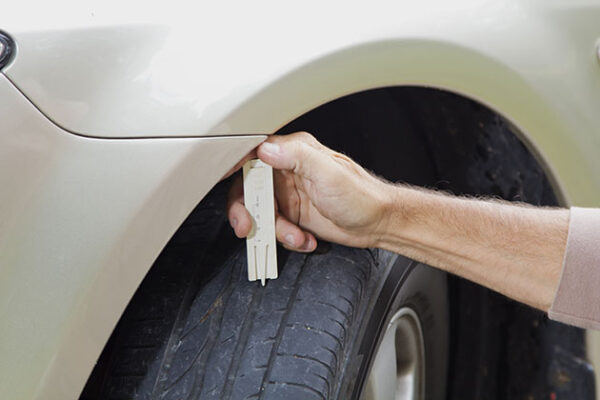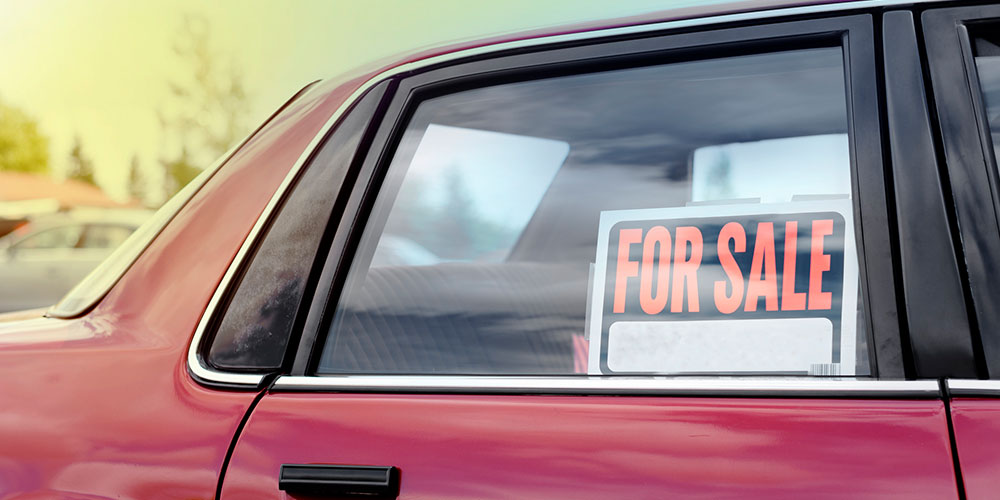Last updated Apr. 6, 2023 by Peter Jakes
The market for pre-owned automobiles in the United States is showing signs of improvement. It is predicted that 39.4 million used automobiles were acquired by Americans in 2018, compared to 17.3 million new cars sold in the same year.
Over the next five years, McKinsey forecasts that sales of used cars will climb at a rate that is much higher than sales of new cars.
When looking for a used automobile, a motorist has the option of purchasing a certified pre-owned vehicle from a dealership or locating a used vehicle from a private seller. Both of these options are available to them.
Before making the purchase of a used vehicle, prospective buyers should carefully consider their own preferences and circumstances in order to determine which of the two alternatives will best meet their needs.
Buying a car from a private seller
Understanding how to purchase a car from a private seller broadens your purchasing choices outside of dealerships and may enable you to negotiate a better price for your subsequent vehicle.
Learn sensible shopping techniques and what to look for when purchasing a used automobile from a private seller.
This might assist you in navigating the procedure if you’re determined to investigate used cars from private dealers.
1. Analysis
You should first study, make a strategy, and be ready to buy a vehicle. Making a budget for your automobile purchase, looking for finance, looking into vehicles that fit your lifestyle, and using websites and classified advertising to locate local bargains on used cars are all part of this process.
2. Examine adverts
Pay attentive attention to the length and caliber of the description of the vehicle while reading the auto advertisement. Any ad should be preceded by pertinent information such as mileage, make, model, year, and term of ownership.
Additionally, the seller has to say if he is the car’s first and sole owner or whether it has had other owners before him.
The description should also include a short history of the vehicle’s usage, any accidents, and information regarding the vehicle’s condition.
The vendor should also be honest about any flaws or fixes that are required. There are occasions when a seller would include issues in an advertisement as an indication that they are really trying to describe the car’s condition.
3. Talk to the vendor

You may proceed with contacting the seller if you’ve discovered a thorough description of a car you’re interested in.
Verify the information in the ad first, and if it is missing, start by asking questions about the vehicle’s accident and maintenance history. After that, ask for a test drive and plan to meet the seller in a busy area, such as a nearby parking lot.
4. Inspect the car

Request a tour of the car after you’ve met the seller so you can look at its condition before the test drive. You should carefully review any maintenance records the person may have as well. Spend some time looking at the following:
- Rust: Pay careful attention to the areas around the wheel wells, doors (both inside and out), and the bottom body. Look for regions of elevated or uneven paint in the same places since rusted-in places may eventually rust again.
- Tire tread: If it seems that the tires will soon need to be changed, you should incorporate this into your offer as new tires may cost anything from a few hundred to several thousand dollars. The uneven tread may also indicate that the brakes have been used too forcefully, which may be a sign of more issues.
- Pedal wear: Wear on the pedals might indicate that the previous owner braked and accelerated too quickly.
- Headlights and taillights: Turn on the headlights to check their functionality. The same goes for the taillights. Ask the seller to press the brakes while you are standing behind the car so you can see the brake lights. Apply the same principle to turn signals.
- Shocks: Gently lower the car’s hood. The automobile should first sway back and forth before lying motionless. Continue toward the car’s back.
5. Try a car
It’s time for the test drive after you’ve completed your first inspection of the vehicle’s significant and visible components. To better understand the performance of the automobile, try to extend the test drive to at least 20 minutes. Pay close attention to how the engine sounds and when the gearbox shifts.
A transmission problem may be indicated if the engine sounds particularly loud before changing gears (in a car with an automatic gearbox) or if the transition isn’t made smoothly. Drive the automobile on the freeway to see how it performs at greater speeds.
If it appears like you have to continually adjust the steering wheel to keep the car driving straight, there may be a problem with the alignment, the tires, or something more severe.
6. Have the car serviced by a technician
Asking the seller whether you may take the car to your technician for further examination is a smart option if the test drive goes smoothly and you don’t discover any significant problems during the vehicle inspection.
Things like seals, brakes, and bearings will be able to undergo a more complete check by the technician.
laws on buying a used car from private seller
When it comes to getting the most value for your money when acquiring a used car, it is almost always in your best interest to do business with a private seller rather than a dealership.
However, before you do it, you need to take some time to thoroughly consider both the positive and negative aspects of the scenario.
That means making the acquisition from a private individual as opposed to a corporation whose principal business is the buying and selling of autos for a profit.
You will no longer have access to the upscale showroom, and it is unlikely that any financing options will be available to you. On the other hand, private sales do come with their own set of advantages.
How to buy a car from a private seller who has a loan
You will be able to buy a car from a person who is selling their vehicle privately if you get a private party auto loan from a lender. This loan will provide you with the money you need to buy the vehicle.
You are going to need to make a decision on the automobile that you are going to buy before you can submit an application for financing. If the loan is approved, the lender will typically pay the amount that is delinquent to the seller or whoever has the lien on the property.
After that, it will be up to you to reimburse the lender, and this repayment will often include interest throughout the duration of the loan’s tenure.
DMV buying a car from private seller
If you are titling and registering a vehicle that was manufactured in 2008 or later, has an odometer reading of fewer than 7,500 miles, and has a gross vehicle weight rating (GVWR) of 8,500 pounds or less.
Your vehicle is required to be certified by the California Air Resources Board (CARB). Visit the Pennsylvania Clean Vehicles Program website to learn more about the program and its eligibility requirements. Documents beginning with “MCO” and “MSO” are required in order to complete an “Application for Certificate of Title” using Form MV-1. PennDOT’s approved agents are the only people who can provide you with this form.
In order for the agent to process your application completely, we will need various information from you. Please be sure to bring a copy of your valid Pennsylvania driver’s license or another form of Pennsylvania identification with you (PDF).
Please ensure that you bring the approved identification requirements (PDF) with you if you are a corporation or non-profit organization purchasing a vehicle.
How do you buy a car from a private seller in Arizona?
Before you can register a car that you bought from a private party in your name, you need a bill of sale and the title of the vehicle. The bill of sale must include the purchase price, and the transfer sections of the title must be completed and signed by both you and the seller in the presence of a notary public.
First things first, check to see whether the individual selling the automobile is the same owner whose name appears on the title.
The title should include the legal name and address of the vehicle’s owner, as well as the vehicle identification number (VIN) for the automobile, the current license plate number, specifics about the make and model, and the mileage at the time the title was granted. Next, make sure that the information on the car is accurate.
Use the vehicle identification number (VIN) found on the title to cross-check the VIN located on the sticker affixed to the car’s dashboard and the VIN located in the door jamb of the driver’s side door. There should be no difference in the vehicle identifying numbers between the three.
When I buy a car from a private seller can I drive it home in Florida?
In order for the buyer to be able to legally transport the vehicle to that state, they will need to purchase a temporary tag from a motor vehicle service facility that is valid for a period of thirty days and costs thirty dollars.
This tag will allow the buyer to transport the vehicle to that state legally. In the state of Florida, the person who purchases a temporary tag is the one who is responsible for paying any relevant taxes or fees.
Frequently Asked Questions
1. How do you buy a car from a private seller in Virginia?
Collect the Required Information. Proof of Ownership Document, Inquire about the Vehicle’s Past. A vehicle history report may teach you about the car’s service history, accidents, and even water damage. Have It Checked Out Mechanically. Close the Deal.
2. Can you drive a car home after buying it?
You need insurance for it. Even if you’re only taking the automobile home from the dealership, you need insurance before you can legally drive it.
3. How do you buy a car from a private seller?
You may locate “cars for sale by owner” listings in your neighborhood, or farther afield if you’re willing to go, on sites like Facebook Marketplace and Craigslist. You may use these websites to find vehicles that meet certain criteria, such as year, make, model, and mileage, and then get notifications whenever new listings that meet those criteria become available.
4. How do I transfer the title on a car in Virginia?
Certification of Title and Registration Application (Form VSA 17A)
Provide documentation that demonstrates your Virginia residence. The payment of the VA car titling costs
4. Can you drive a car you just bought without tax?
No, you cannot legally operate a motor vehicle without first paying the required vehicle registration fee. It doesn’t matter how long ago you purchased your automobile if you’re still driving it around without paying the appropriate taxes.
4. What do I need to change ownership of a car?
If you want to change the name on your car registration, you’ll need to fill out paperwork and submit it to your state’s DMV.
Summary
When looking for a secondhand car, dealing directly with the owner might be helpful. For instance, if you want to buy a certain car but can’t seem to track one down, you may try expanding your search to include cars for sale by owner.
It’s also common for the price of a car sold by an individual to be cheaper than the price listed by a dealership.
The legal document used to transfer ownership of a vehicle is referred to as a “proof of ownership” document. These documents are known as “proof of ownership” documents and are issued by titling jurisdictions and vehicle manufacturers. These documents provide specific vehicle information.







